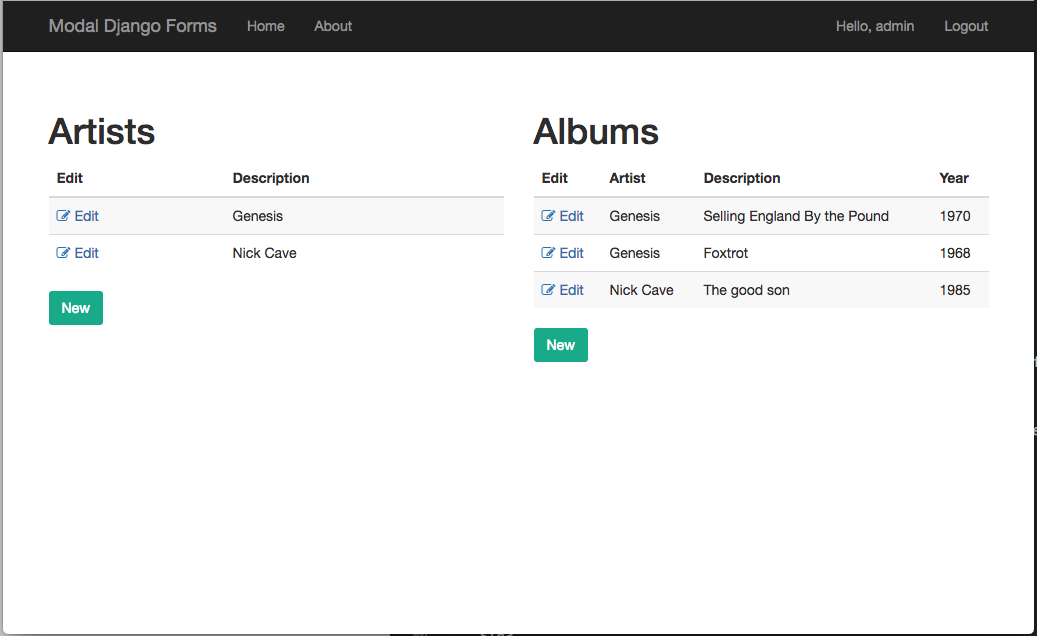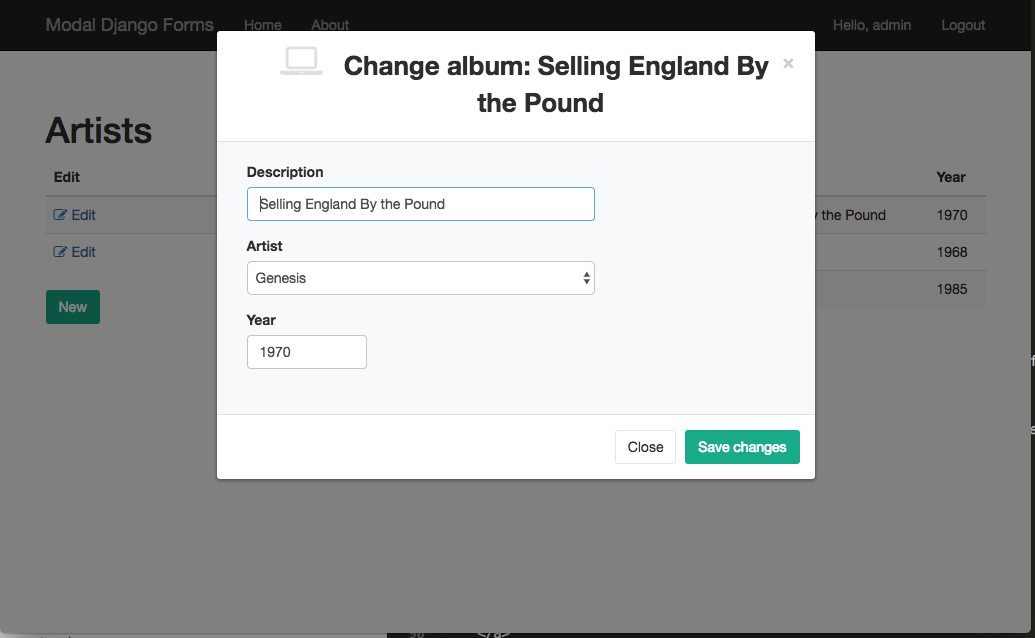A fully generic solution for Django models editing in the front-end¶
We’re really very close to the Holy Grail of Django models editing in the front-end.
Can we really do it all with a single generic view ?
Yes sir !
Note
Check sample code at: (9) A fully generic solution for Django models editing in the front-end
################################################################################
# A fully generic "edit" view to either create a new object or update an existing one;
# works with any Django model
def generic_edit_view(request, model_form_class, pk=None):
model_class = model_form_class._meta.model
app_label = model_class._meta.app_label
model_name = model_class._meta.model_name
model_verbose_name = model_class._meta.verbose_name.capitalize()
# Retrieve object
if pk is None:
# "Add" mode
object = None
required_permission = '%s.add_%s' % (app_label, model_name)
else:
# Change mode
object = get_object_by_uuid_or_404(model_class, pk)
required_permission = '%s.change_%s' % (app_label, model_name)
# Check user permissions
if not request.user.is_authenticated or not request.user.has_perm(required_permission):
raise PermissionDenied
# Either render only the modal content, or a full standalone page
if request.is_ajax():
template_name = 'frontend/includes/generic_form_inner.html'
else:
template_name = 'frontend/includes/generic_form.html'
if request.method == 'POST':
form = model_form_class(instance=object, data=request.POST)
if form.is_valid():
object = form.save()
if not request.is_ajax():
# reload the page
if pk is None:
message = 'The %s "%s" was added successfully.' % (model_verbose_name, object)
else:
message = 'The %s "%s" was changed successfully.' % (model_verbose_name, object)
messages.success(request, message)
next = request.META['PATH_INFO']
return HttpResponseRedirect(next)
# if is_ajax(), we just return the validated form, so the modal will close
else:
form = model_form_class(instance=object)
return render(request, template_name, {
'object': object,
'form': form,
})
Adding an appropriate ModelForm in the URL pattern is all what we need; from that, the view will deduce the Model and other related details.
urlpatterns = [
...
path('album/add/',
views.generic_edit_view,
{'model_form_class': forms.AlbumEditForm},
name="album-add"),
path('album/<uuid:pk>/change/',
views.generic_edit_view,
{'model_form_class': forms.AlbumEditForm},
name="album-change"),
...
]
In the page template, we bind the links to the views as follows:
<!-- Change -->
<a href=""
data-action="{% url 'frontend:album-change' row.id %}"
onclick="openModalDialogWithForm(event, '#modal_generic', null, afterObjectEditSuccess); return false;"
data-title="Change album: {{ row }}"
>
<i class="fa fa-edit"></i> Edit
</a>
...
<!-- Add -->
<button
href=""
data-action="{% url 'frontend:album-add' %}"
data-title="New album"
onclick="openModalDialogWithForm(event, '#modal_generic', null, afterObjectEditSuccess); return false;"
type="button"class="btn btn-primary">
New
</button>

